With its evocative design and “right-sized” form, the Mazda CX-30 doesn’t strike the same chord as other compact crossovers. Others went for function over form—touting things like ruggedness or at the very least, rugged styling cues. On the other hand, the CX-30 has gone the other way, coming across as a crossover that values form as much as function.
The vehicle’s program manager, Naohito Saga, explains the rationale behind this. Saga-san attributes the CX-30’s design to one thing: rekindling lost emotions in adult life. He explains: “As an adult, he can be very busy at work; he can also be very busy at home, too. While he may find happiness in these things, he may have forgotten his own personal happiness due to the busyness of each day. The CX-30 is designed to be a personal space. It can be used for the daily commute—bringing the kids to school and all that, but it’s also about rediscovering the little things in life. Mazda has always been focused on people, but the CX-30 is making it even deeper.”
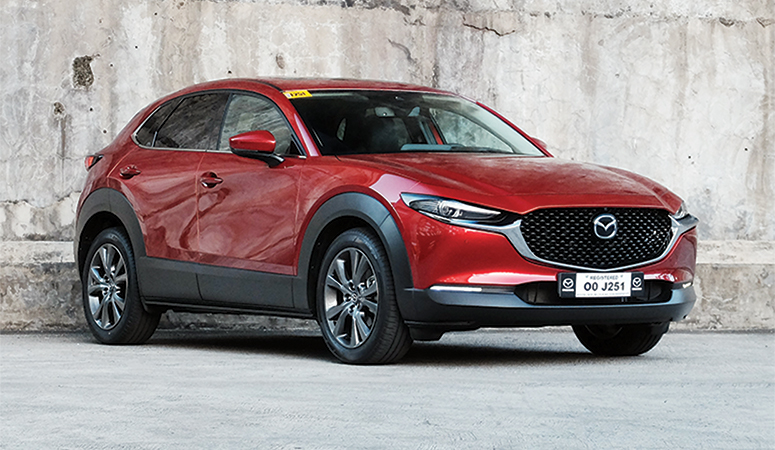
Throughout its design phase, Saga-san says it was important to keep the exterior dimensions of the CX-30 as compact as possible so that it can be brought anywhere freely. It can be brought through narrow roads without anxiety or be parked without hesitation even in a tight space.
But while the car itself is compact, its role as a family-friendly crossover can’t be denied. It’s designed to accommodate four adults. More than that, extra consideration has been done to make sure every single passenger gets to sit in a proper posture. Among the ingenious design details include tilting the rear floor slightly. “We have created a space where everyone can feel relaxed and comfortable,” Saga-san explains.
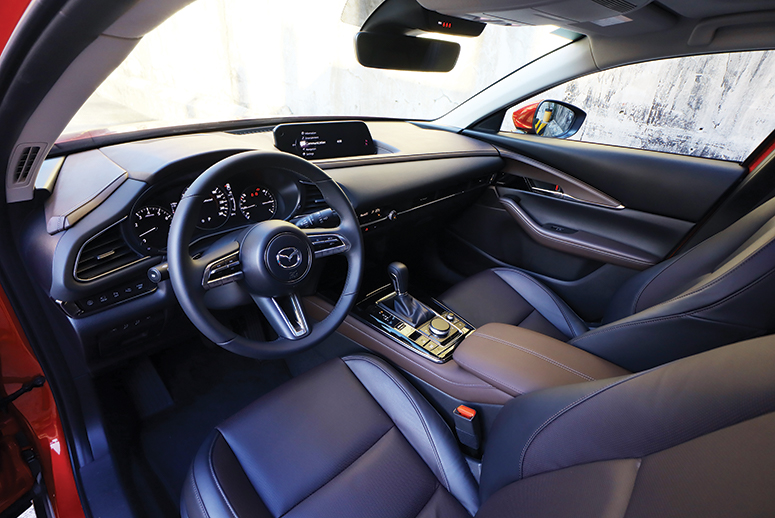
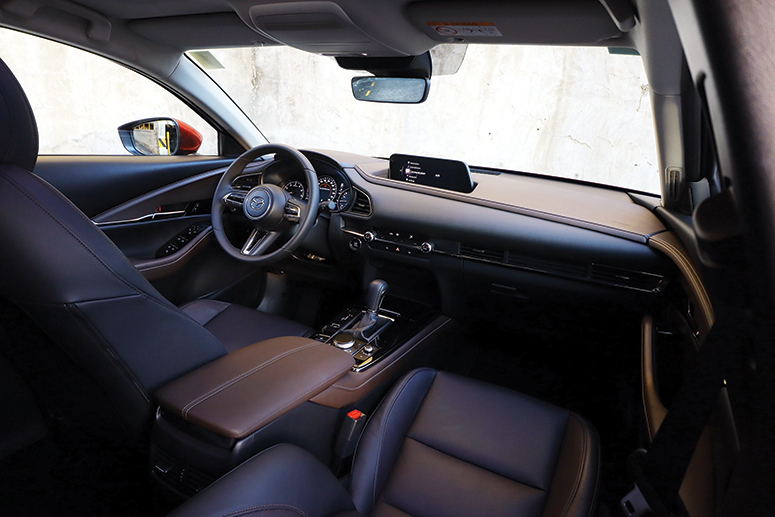
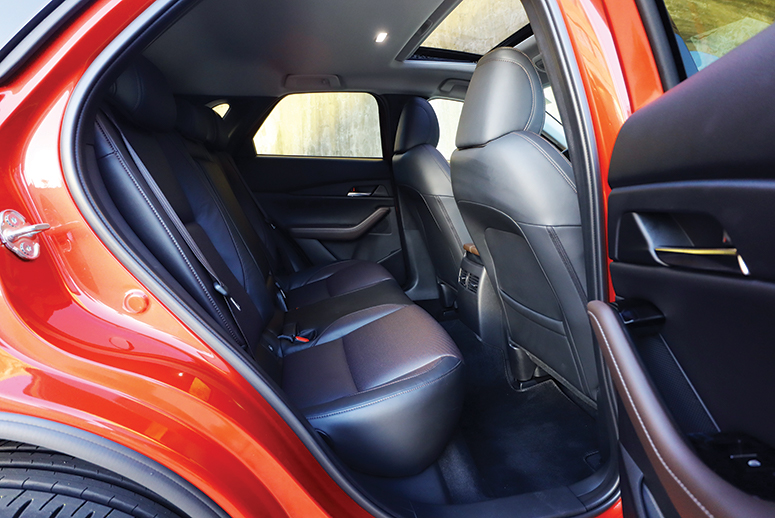
Towards the back, the luggage prioritizes everyday usability and utility rather than pursuing class-leading volume (again, it’s all about keeping the dimensions compact). Mazda did research on the necessary luggage that a young family would use in everyday life and made sure it’s all easily accommodated. They even went so far as to make sure that heavy luggage could be loaded easily, and designing a trunk release button that could be pressed without outstretching the arms—even for kids.
In addition to its packaging, Saga-san says it’s the CX-30’s mission to give its driver a sense of Jinba-Ittai, and not in a sportscar sense.
“Actually, I would like people who are not familiar with driving to feel confident. I want that anxiety to disappear, turning daily events into something more personal. I want the driver to notice the surrounding scenery or hear the voices of his children. I want him to feel comfortable, want him to drive more; to go somewhere. That is the value that the CX-30 creates,” he says.
Still, despite being more emotional, they haven’t forgotten the functional aspect. Ryosuke Morishige of Mazda’s Product Strategy Department explains that the CX-30 was designed for long-term use, not limited to a particular stage in one’s life.
Thanks to Mazda’s attention to its packaging—the layout elements that make up a car such as the engine, transmission, and seats—the CX-30 carves out a truly usable interior space. But more than just plain measurements, designers and engineers paid consideration to its usability. It came to a point where they made millimeter adjustments just to take into account how tall a person can sit, and what can be loaded in the luggage compartment.
“First of all, we had a goal of reducing the CX-30’s total length to 4,400mm or less to make it a compact size that’s easy to drive,” explains Morishige-san. “On top of that, I designed it so that even if a child grows up, it can sit four adults comfortably.”
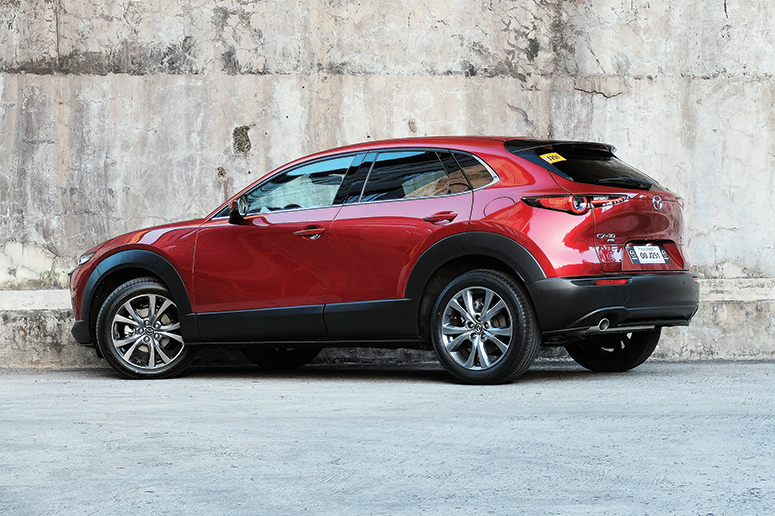
However, simply increasing the occupant space will exceed the CX-30’s target total length; so engineers came up with an ingenious solution: raise the rear seats a little. Not only was Mazda able to keep the overall length to 4,395mm, but also managed to improve the comfort of anyone seated at the back. Of course, designers had to raise the roof a little, but not so much as to break its elegant design.
Pulling this off is possible thanks to the unique way Mazda makes its cars. During the CX-30’s development, a special team was formed encompassing various departments such as design and R&D. From Day 1, everyone was made aware of the 4,400mm target, and they devised solutions to reach that goal.
Besides the passenger space, Mazda also worked on the usability of the luggage compartment. They made sure it could accommodate various items be it a stroller, suitcase or gym bag, but they also paid close attention to the loading height. They made sure it’s easy to load or unload heavy items including boxes that contain prefabricated furniture (hello, IKEA).
Early in the CX-30’s development, Morishige-san and his team came up with a full-scale evaluation model just to verify the usability of the rear seats and luggage compartment.
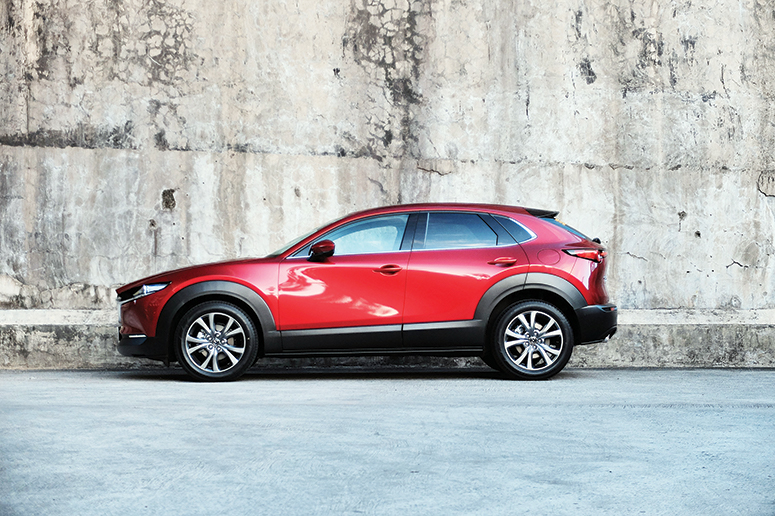
“It’s not the numbers that determine the ease of use of a car,” says Morishige-san. “We actually sat down in the rear seats and checked whether the knee room and head room were large enough. In addition, we actually loaded packed luggage into the luggage compartment. We actually made a model that can change the height of the luggage compartment floor with a pedal, like the chair in a beauty salon, so that we could set the optimal height that doesn’t strain the body.”
In the CX-30’s product literature, its cargo compartment is listed as 430 liters, and while this number is important, one number makes it easier to use: the ground clearance to the floor of the luggage compartment. That magic number, in case you’re wondering, is 730mm.
“When buying a refrigerator, sometimes you choose the one with the larger liter capacity. But when you use it, the usability may not be as you imagined. Storage spaces may not be utilized to the fullest extent when items collide with one another,” says Morishige-san. “It’s the same with a car. The CX-30 is the result of repeated verification in millimeters, imagining how it’ll be used by the customer. Its ease of use cannot be expressed by numerical values alone.”

